Where do you start when preparing for a trip to Japan, a trip that will have a strong focus on sake as well. You will find countless of pages on the internet with information about breweries, restaurants, tours, etc. About 2 months ago, while looking for information about sake, I found the following blogpost about Shimazaki brewery. After reading this post, I noticed that the writer of said post, Giulia, is a sake educator and brewer living in Japan. Seeing as she does courses and private tastings as well, I decided to contact her for a tasting.
So, on a very warm November Sunday I took the train to meet up with Giulia. After a warm welcome and a very nice fruity sake, we started with the private tasting. Since I have a foundation when it comes to sake, Giulia had a lot of more in depth knowledge about sake to share while first enjoying a sweet peach craft sake.
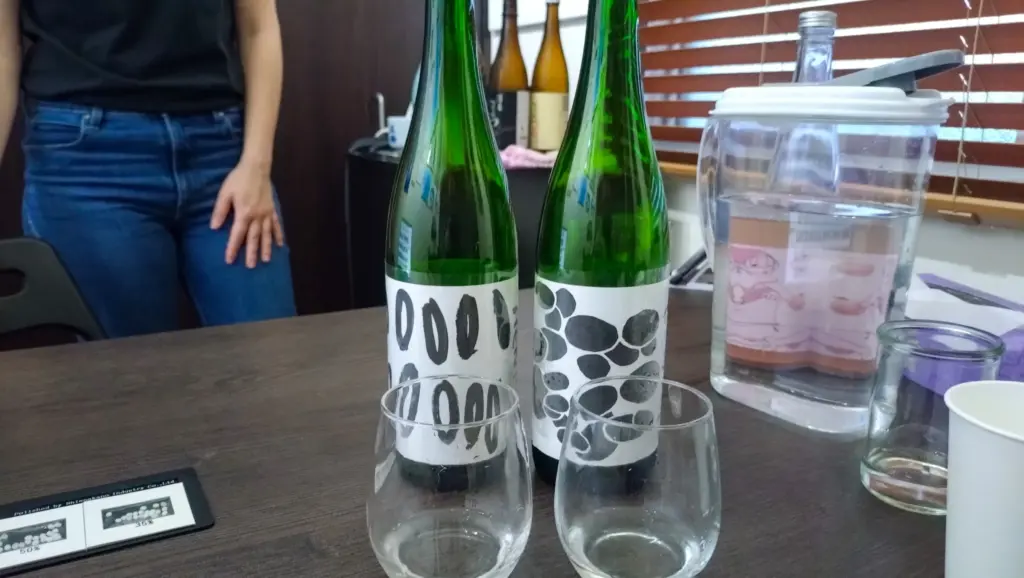
The first two sake were both of the same brewery: The Genkei and Henpei from the Fukucho brewery in Hiroshima. First topic to discuss was the way that polishing effects the flavour of sake. While the Genkei was polished using a ‘regular’ way, the Henpei sake was polished in a more ‘oval’ way, so as to try keeping the starchy centre of the rice intact. Where the Genkei had very nice aromas and fruity flavours (pear, melon, green fruits), the Henpei was a lot less aromatic, but taste wise, it was a very explosive! I was quite stunned to be honest. Of course, this sake also had a lot of fruity flavours, mostly stone fruit. Both very good sake, but more importantly, a lot of new things I didn’t know about the sake world!
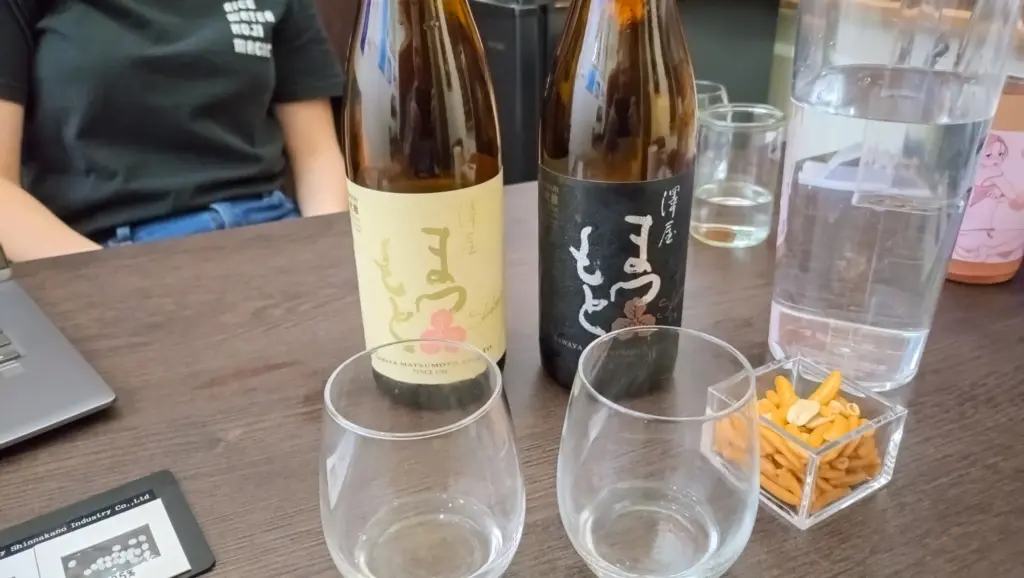
The second pair of sake where also a two sake that came from the same brewery: The Junmai sake from Matsumoto brewery in Kyoto. These two bottles were made the same way, expect for one difference: one is made with Yamada-Nishiki rice, while the other is made with Omachi. The Yamada-Nishiki sake was more delicate, while the Omachi had a more earthy, rough flavour. I especially enjoyed the experience Giulia had while brewing, how rice behaves pre-fermentation.
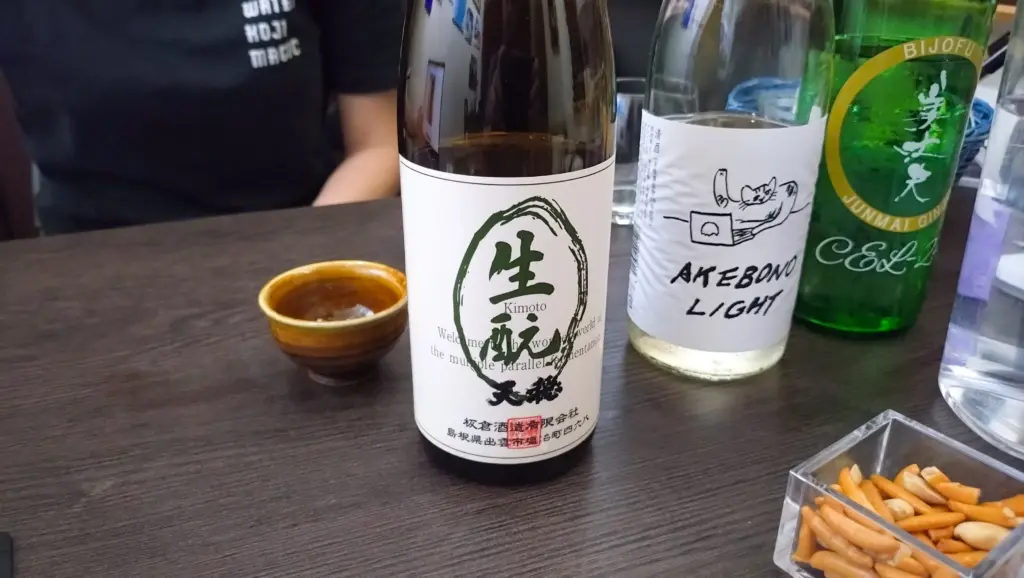
Next up was to take a look at modern-style sake. In Japan, sake is seen the same way as Genever is seen in the Netherlands: it’s that stuff my grandfather drinks. Most young people here would rather order a beer than sake. The sake industry tries to get more young people to drink sake. The two sake that were served where the Bijofu Junmai Ginjo from Kofu and the Akebono Light. The first sake was made with a yeast that produces a lot of aromas. Even with my terrible sense of smell I could immediately notice the fruitiness of the sake. Its flavours were lacking to me. It was very easy to drink, but it did not leave an impression. The second sake was made with a white koji, which produces a lot of acidity. Because of this, the sake kind of resembles something like a white wine. I can understand why people would like this though, they were just not for me.
To restore the balance, I got served a Kimoto-style sake, made by the Itakura brewery in Shimane. Kimoto is a very old way of making a sake starter. Because of this, it has a very distinct flavour profile. Quite subtle at first, it soon fills your mouth with lots of umami. Also trying this one warm, I can say, I prefer the old-school style sake more than the newer types.
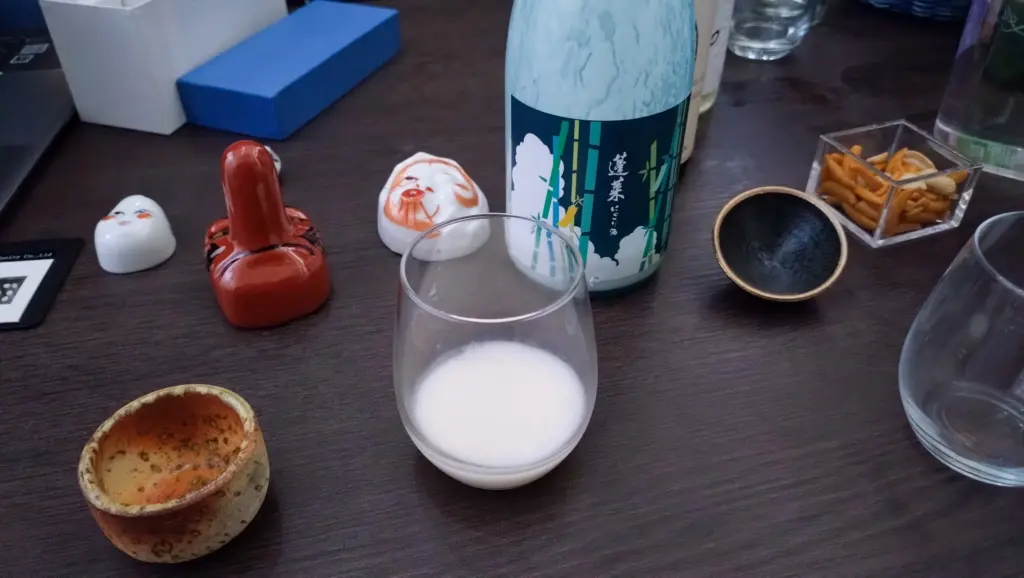
Time to try a nigori sake. Already having looked at the bottle, this would probably be the thickest nigori I have ever tried! This nigori was made by Horai in Gifu prefecture, and is high in alcohol as well. With an almost yoghurt like consistency, you really need to take your time drinking this. Giulia then came with a suggestion: adding sansho pepper to the sake. Experimenting like this was a first for me as well. The peppery kick of the sansho really elevated this tasty sake even more.
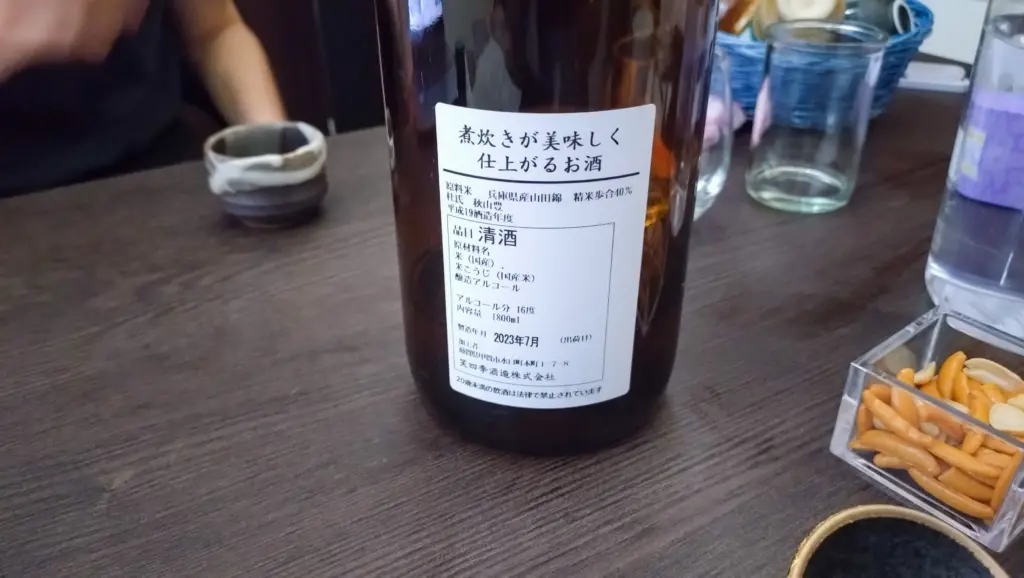
The final sake of the evening was a very mysterious bottle. Coming only with descriptive label, this sake was a 20 year old koshu (aged) daiginjo sake from Shiga prefecture. Nutty, caramelly, well rounded and absolutely gorgeous, this was a great way to end this tasting. Koshu is an aquired taste, not everyone likes it. With sake like this, I am very grateful that I do like koshu.
This tasting by Giulia was just a fantastic experience. Learning so much while enjoying great sake is just a blessing. Time just flew by, discussing everything sake. So to anyone who has a trip planned to Japan and wants to experience sake, try this tasting!
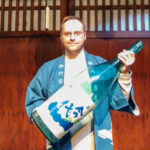
Add a comment